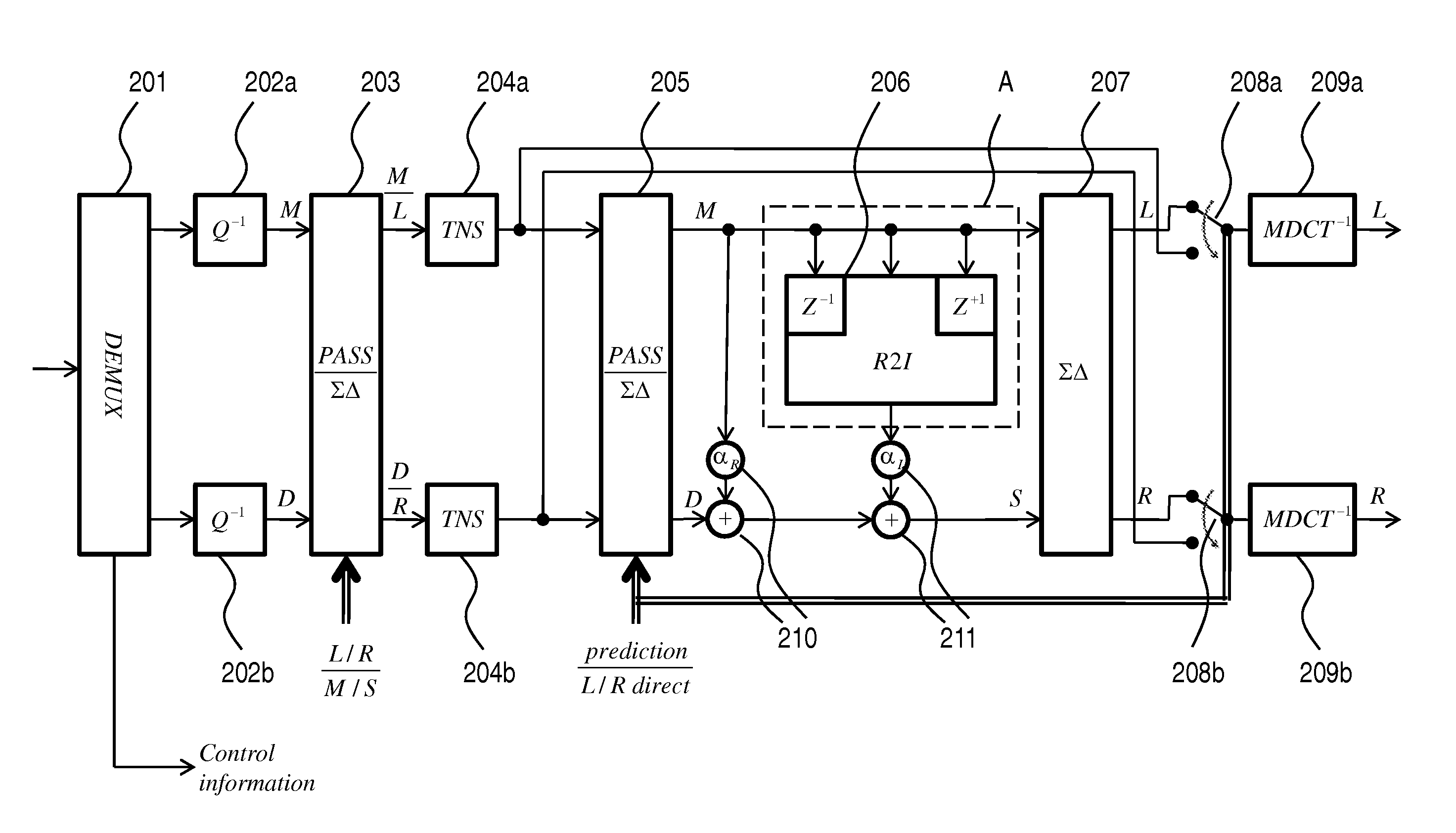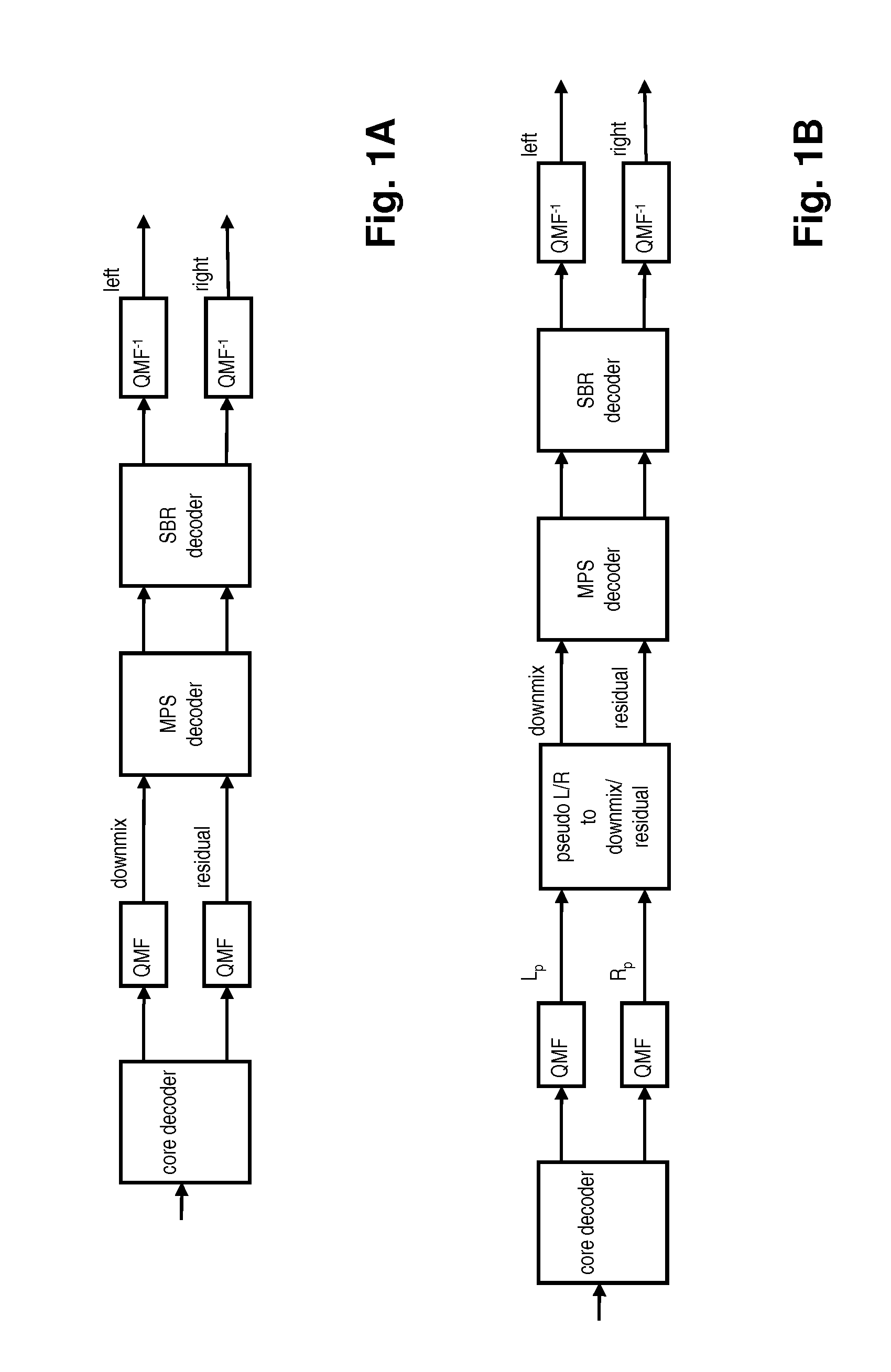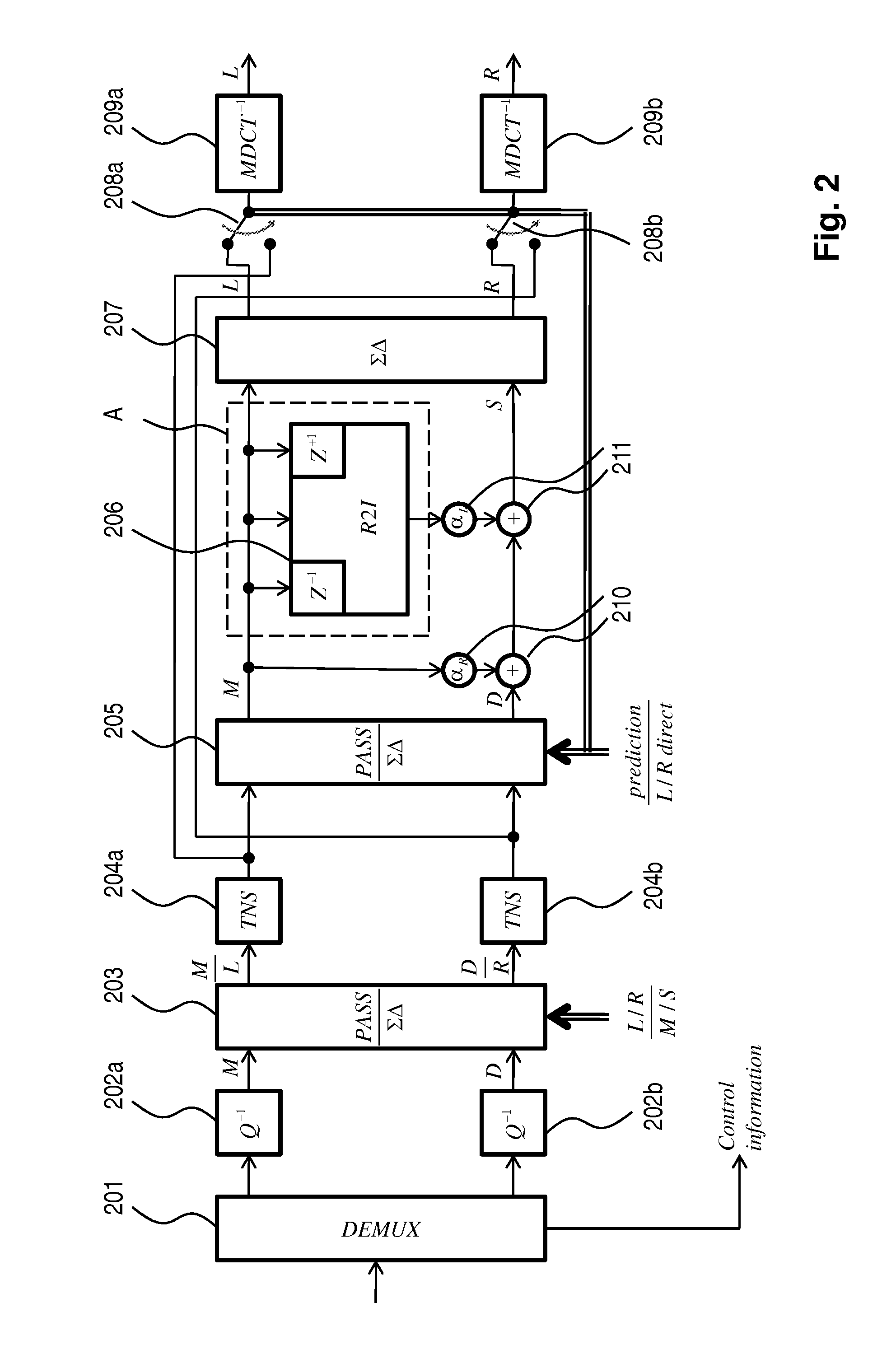MDCT-Based Complex Prediction Stereo Coding
a complex prediction and stereo coding technology, applied in the field of stereo audio coding, can solve the problems of not optimizing for higher bit rate computational complexity, not improving coding efficiency, and typically not using sbr tools, and achieve the effect of computational efficiency
- Summary
- Abstract
- Description
- Claims
- Application Information
AI Technical Summary
Benefits of technology
Problems solved by technology
Method used
Image
Examples
Embodiment Construction
I. Decoder Systems
[0082]FIG. 2 shows, in the form of a generalized block diagram, a decoding system for decoding a bit stream comprising at least one value of a complex prediction coefficient α=αR+iαI and an MDCT representation of a stereo signal having downmix M and residual D channels. The real and imaginary parts αR, αI of the prediction coefficient may have been quantized and / or coded jointly. Preferably however, the real and imaginary parts are quantized independently and uniformly, typically with a step size of 0.1 (dimensionless number). The frequency-band resolution used for the complex prediction coefficient is not necessarily the same as the resolution for scale factors bands (sfb; i.e., a group of MDCT lines that are using the same MDCT quantization step size and quantization range) according to the MPEG standard. In particular, the frequency-band resolution for the prediction coefficient may be one that is psycho-acoustically justified, such as the Bark scale. A demultip...
PUM
 Login to View More
Login to View More Abstract
Description
Claims
Application Information
 Login to View More
Login to View More - R&D
- Intellectual Property
- Life Sciences
- Materials
- Tech Scout
- Unparalleled Data Quality
- Higher Quality Content
- 60% Fewer Hallucinations
Browse by: Latest US Patents, China's latest patents, Technical Efficacy Thesaurus, Application Domain, Technology Topic, Popular Technical Reports.
© 2025 PatSnap. All rights reserved.Legal|Privacy policy|Modern Slavery Act Transparency Statement|Sitemap|About US| Contact US: help@patsnap.com



